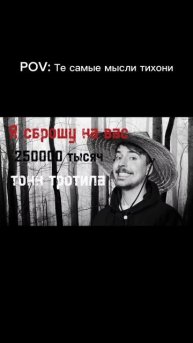Butterflies at Wisley - Papilio memnon and Calliandra tergemina bush - Fiðrildagarður - Fiðrildi
Walking around Wisley glasshouse. Great Mormon - Papilio memnon flying amongst the flowers of Calliandra tergemina. Fiðrildi - Butterflies - Skrautfiðrildi - Skordýr - Skordýralíf - Smádýralíf.
Calliandra tergemina is a species of flowering plants of the genus Calliandra in the Fabaceae family. http://en.wikipedia.org/wiki/Calliandra
Butterflies in the Glasshouse has become a delightful annual fixture on Wisley's calendar. Brighten up a winter's day by stepping into a world of tropical colour- here's a taste of this very special event. : http://www.rhs.org.uk/Gardens/Wisley/What-s-on/Butterflies-at-Wisley
Fiðrildi eru ættbálkur skordýra sem heitir á latínu Lepidoptera. Lepidoptera þýðir hreisturvængjur, sem vísar til þess að hár á vængjum hafa umbreyst í hreistur. Þetta verða allir varir við sem snerta fiðrildi. Skipta má fiðrildum í hávængjur (e. butterfly) og lágvængjur (e. moth). Hávængjur, sem einnig hafa verið kallaðar flögrur, reisa vængina lóðrétt upp í loftið en lágvængjur eru þau fiðrildi sem leggja vængina lárétt yfir bolinn. Á Íslandi lifa eingöngu lágvængjur en hávængjur berast hingað með loftstraumum frá Evrópu. Alls eru rúmlega 70 tegundir fiðrilda á Íslandi. Fiðrildi ganga í gegnum fullkomna myndbreytingu, það er að segja lífsstigin eru egg, lirfur, púpur og fiðrildin sjálf. Lirfurnar eru nefndar tólffótungar, en þær hafa 3 pör venjulegra ganglima og breytilegan fjölda fótatota eftir ættum innan fiðrildaættbálksins. Á tólffótungastiginu lifa flestar tegundir fiðrilda á laufblöðum plantna, en til eru tegundir sem éta efni úr dýraríkinu, til dæmis guli fatamölurinn sem lifir á ull og ullarvörum. Púpustigið er það stig þegar myndbreyting á sér stað frá lirfu til fullorðins fiðrildis. Á þessu stigi étur lífveran ekki. Fullorðið fiðrildi hefur ummyndaða munnlimi, rana sem notaður er til að sjúga upp fljótandi blómasykur úr blómum. Um leið frjóvga fiðrildin blómplönturnar. Flest fiðrildi á Íslandi hafa lífsferil sem tekur eitt ár. Oftast klekjast fiðrildi út seinni part sumars eða að hausti og verpa eggjum þar sem vænta má að fæða verði fyrir tólffótungana næsta sumar, til dæmis nálægt brumi trjáa. Eggin klekjast síðan um svipað leyti og brumin springa og fær þá lirfan nóg að éta. Lirfustigið er oftast um einn mánuður, en þá síga tólffótungar sumra tegunda (til dæmis haustfiðrildisins) niður til jarðar og verða að púpum í jarðvegi neðan við tréð eða runnann. Púpustigið varir síðan fram í september eða október hjá haustfiðrildinu, eða í 2-3 mánuði, þegar fullorðna fiðrildið skríður út og nýr lífsferill tekur við.: http://www.visindavefur.is/svar.php?id=3581
Flowers for butterflies - It's important to choose plants with open, single blooms so that the butterflies can reach the nectar. See more: http://www.rhs.org.uk/Gardens/RHS-Partner-Gardens/Features/Gardening-for-butterflies
Three more ways to help butterflies: http://apps.rhs.org.uk/advicesearch/Profile.aspx?pid=649
The Great Mormon butterfly is large with 120 to 150 mm span. It has four male and many female forms, the females being highly polymorphic and many of them being mimics of unpalatable butterflies. This species has been studied extensively for understanding the genetic basis for polymorphy and Batesian mimicry. As many as twenty-six female forms are reported.
Male. Tailless, above deep blue to black. It may or may not have red streak on the forewing at the base of the cell.
Female. Tailless. Upperside forewing ground colour sepia, streaked with greyish white. The basal third part of the cell is red and is touched outwardly with white. Upper hindwing is blue-black. It has 5 to 7 yellow or white discal patches.
Female form butlerianus
Tailless. Resembles the typical male. Both Wings are dark sepia. The forewing has a white area on the inner margin. The hindwing is scaled with blue.
Female form alcanor
Tailed. The sides of the abdomen are yellow.
Upperside forewing greyish brown with veins and streaks between them black. The cell is red at the base. There is a velvety black patch at the bases of veins 1 and 2 of the upperside forewing.
Upperside hindwing is black with part of the cell white. There are white streaks around it. The tornus is red with a large black spot. There is a row of red terminal spots between the vein.
Male & female form polymnestoroides
Tailless.
Male. Upperside hindwing and forewing have short blue discal stripes.
Female. The upperside forewing is sepia with pale grey streaks amongst the veins. The base of the cell is red. The upperside hindwing is velvety brown with a blue discal area and has black spots, as in the case of the Blue Mormon (P. polymnestor), which it mimics. : http://en.wikipedia.org/wiki/Papilio_memnon
Видео Butterflies at Wisley - Papilio memnon and Calliandra tergemina bush - Fiðrildagarður - Fiðrildi автора Сокровища таланта
Видео Butterflies at Wisley - Papilio memnon and Calliandra tergemina bush - Fiðrildagarður - Fiðrildi автора Сокровища таланта
Информация
19 февраля 2025 г. 11:22:12
00:00:49
Похожие видео






















